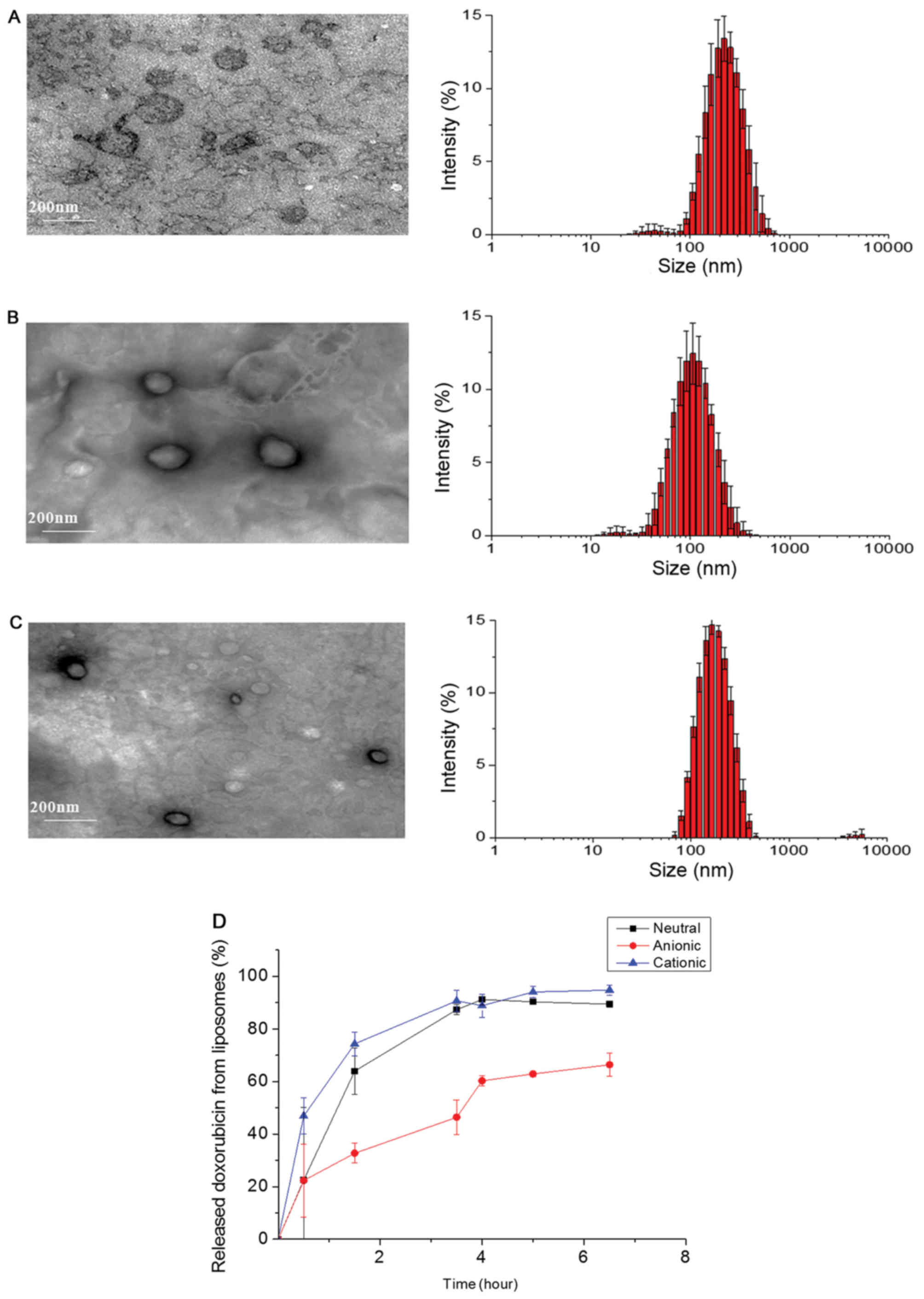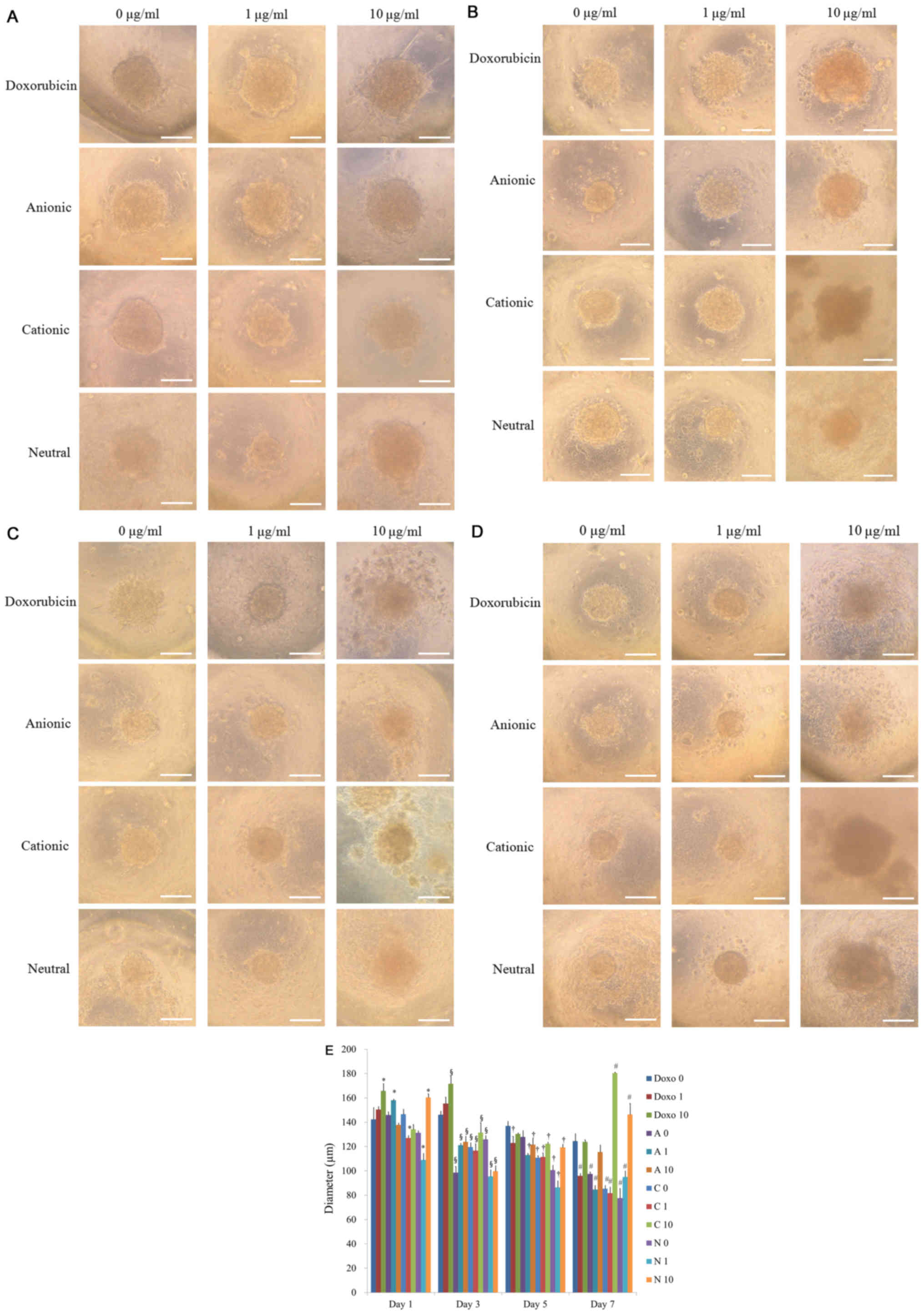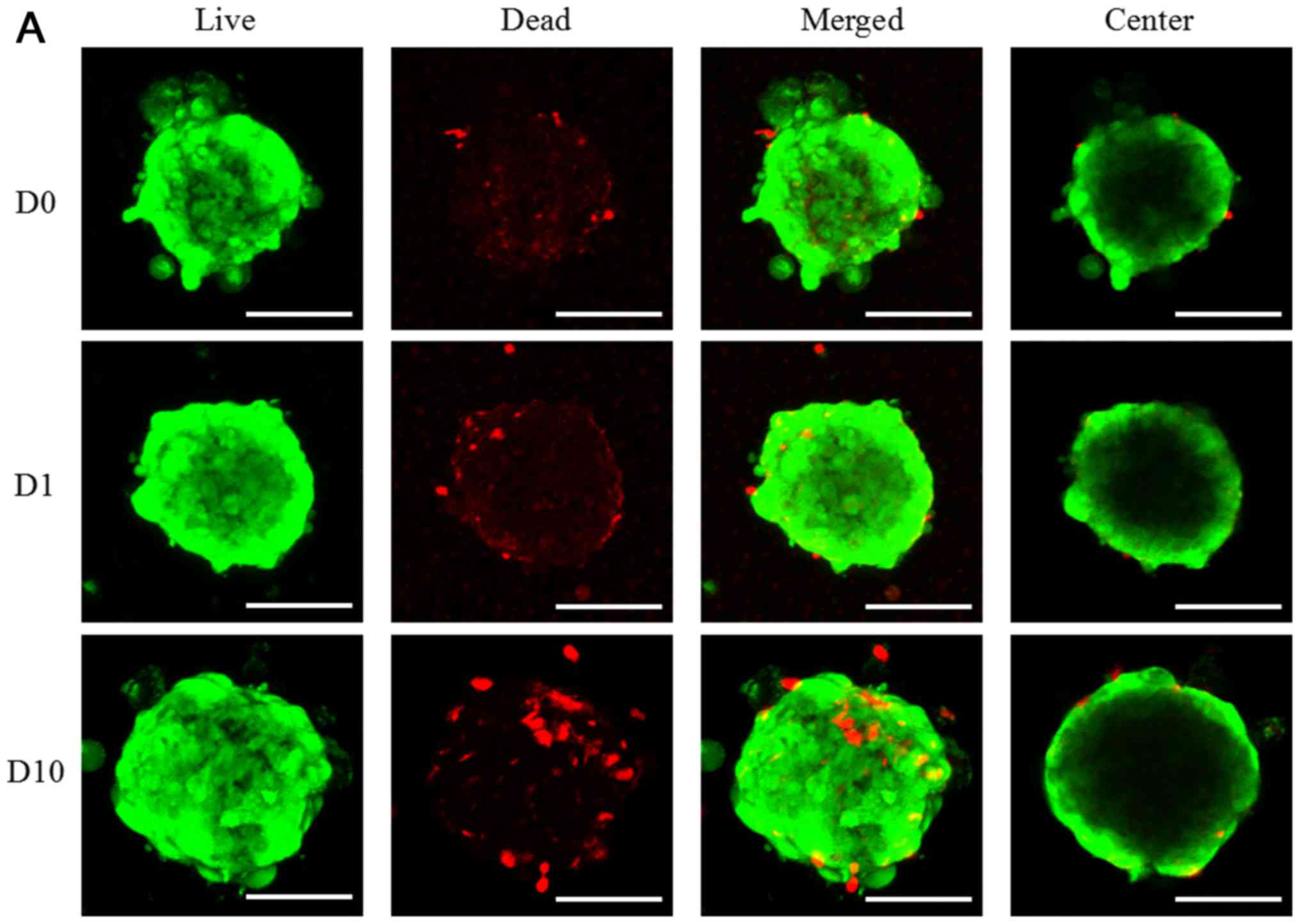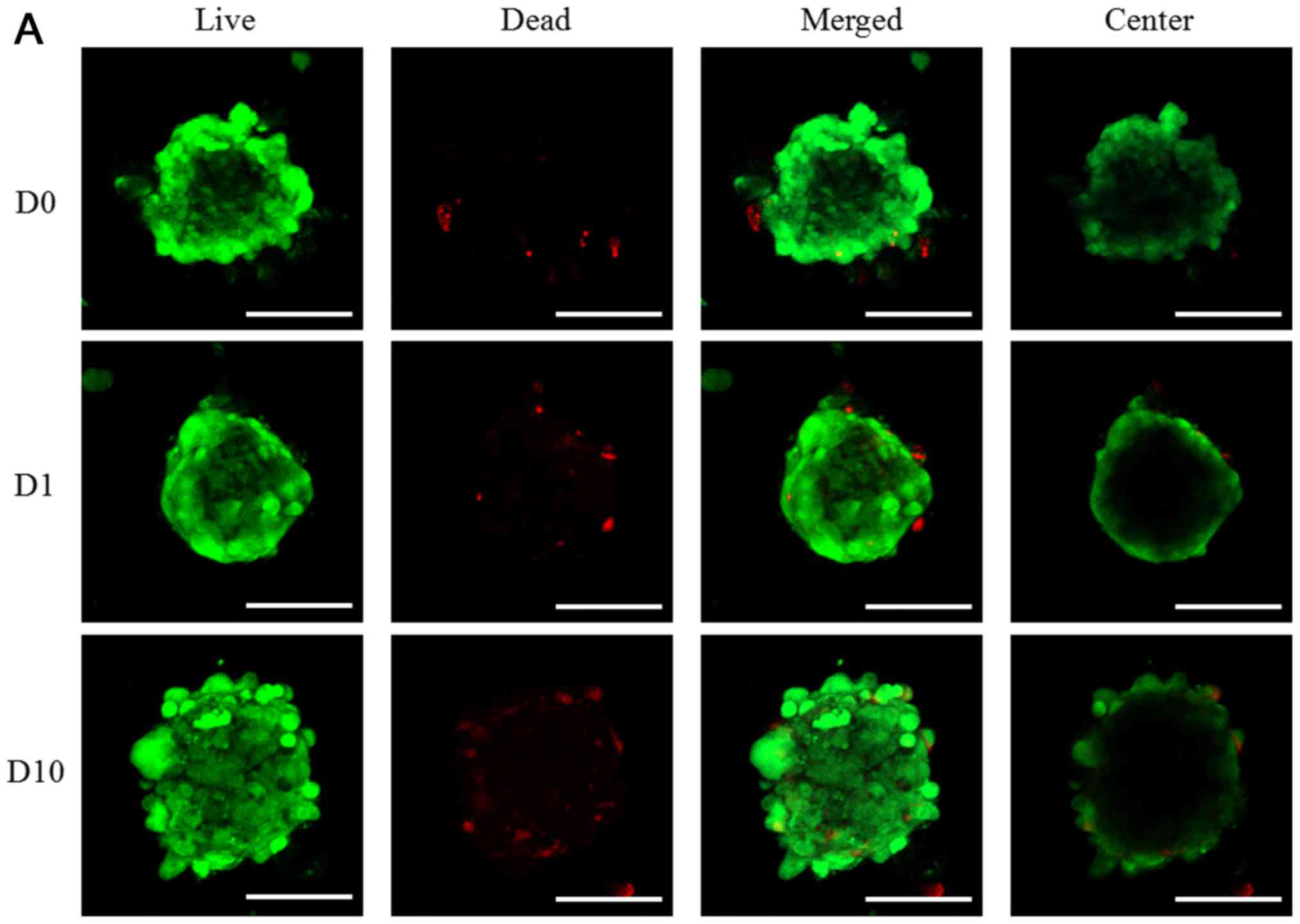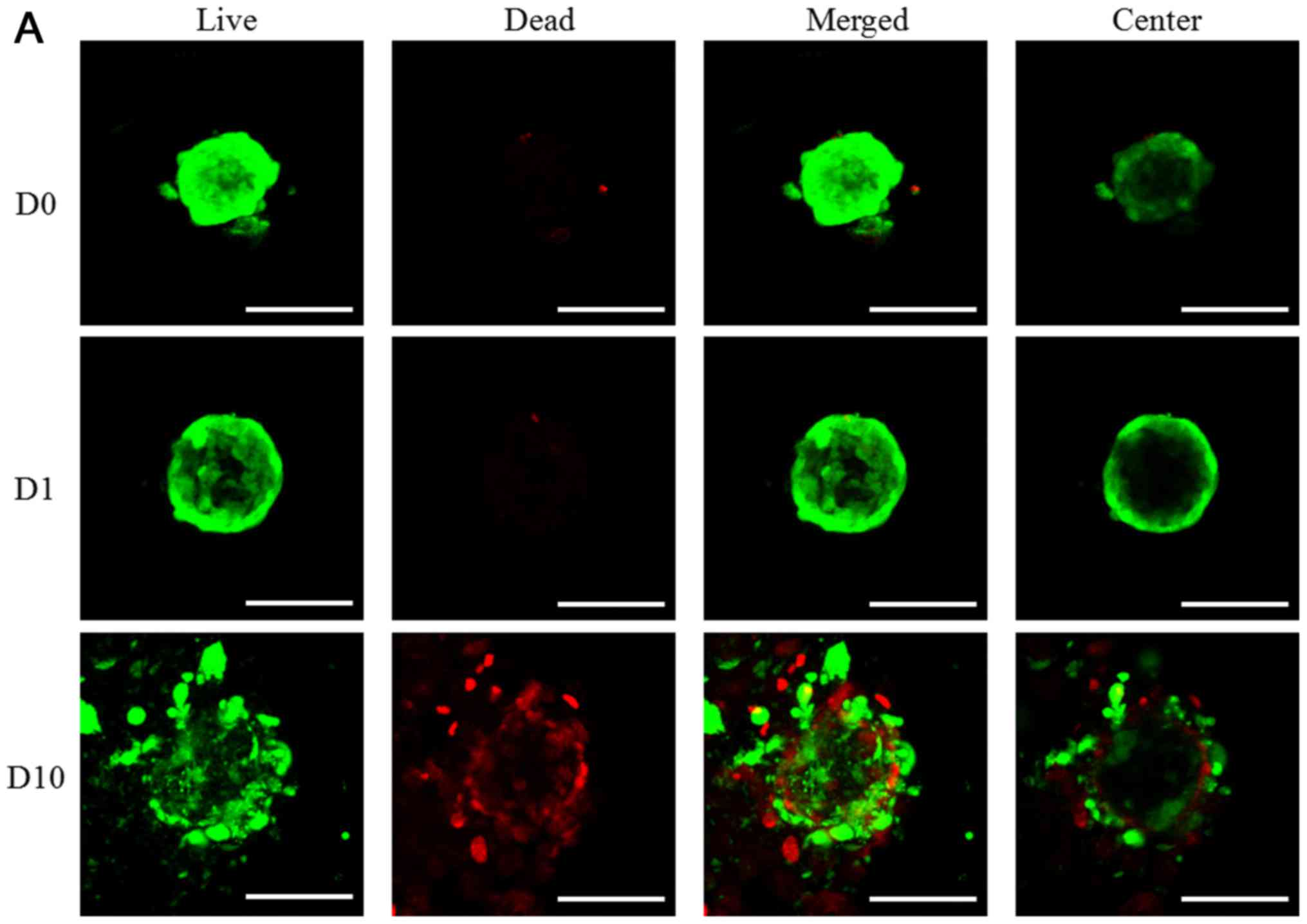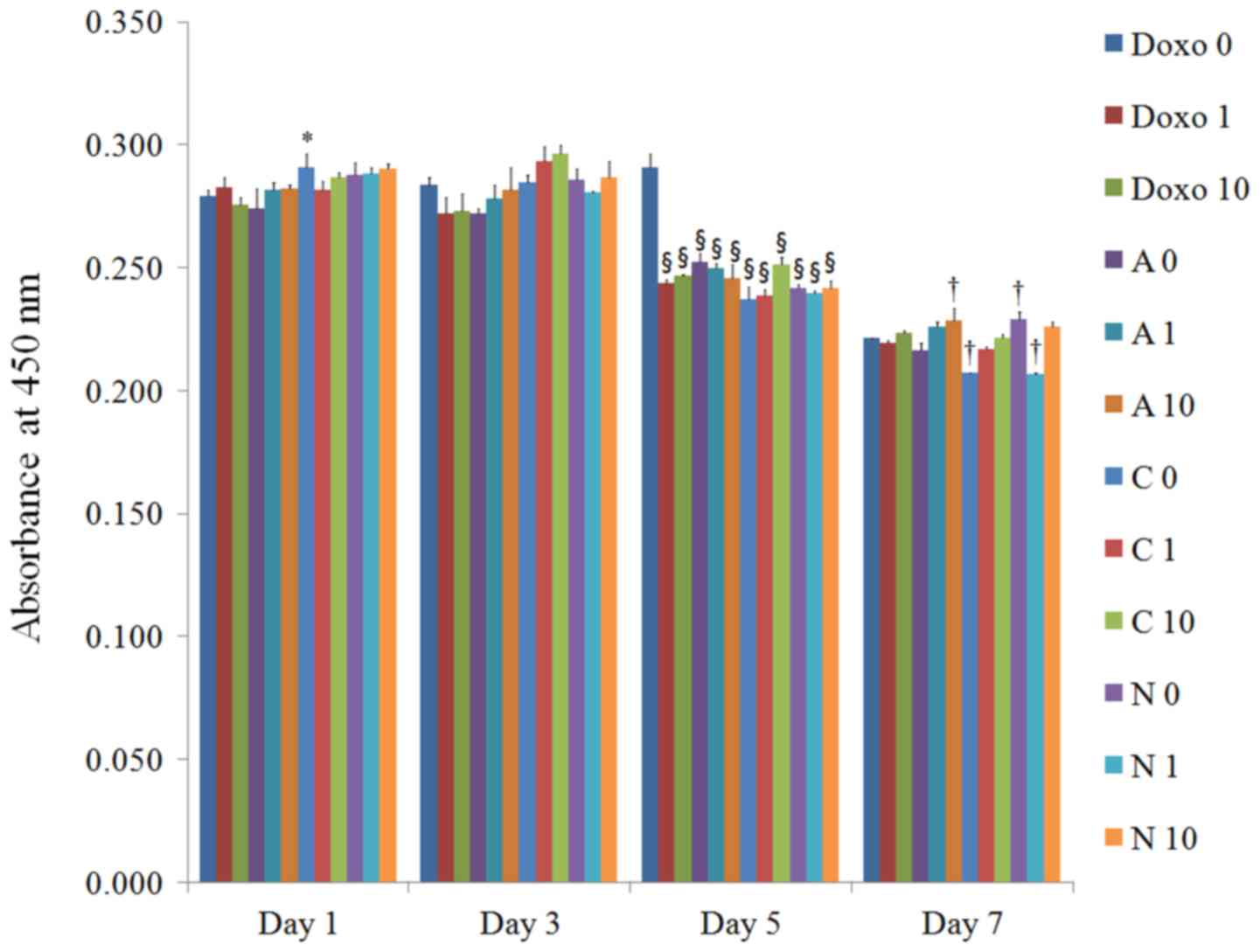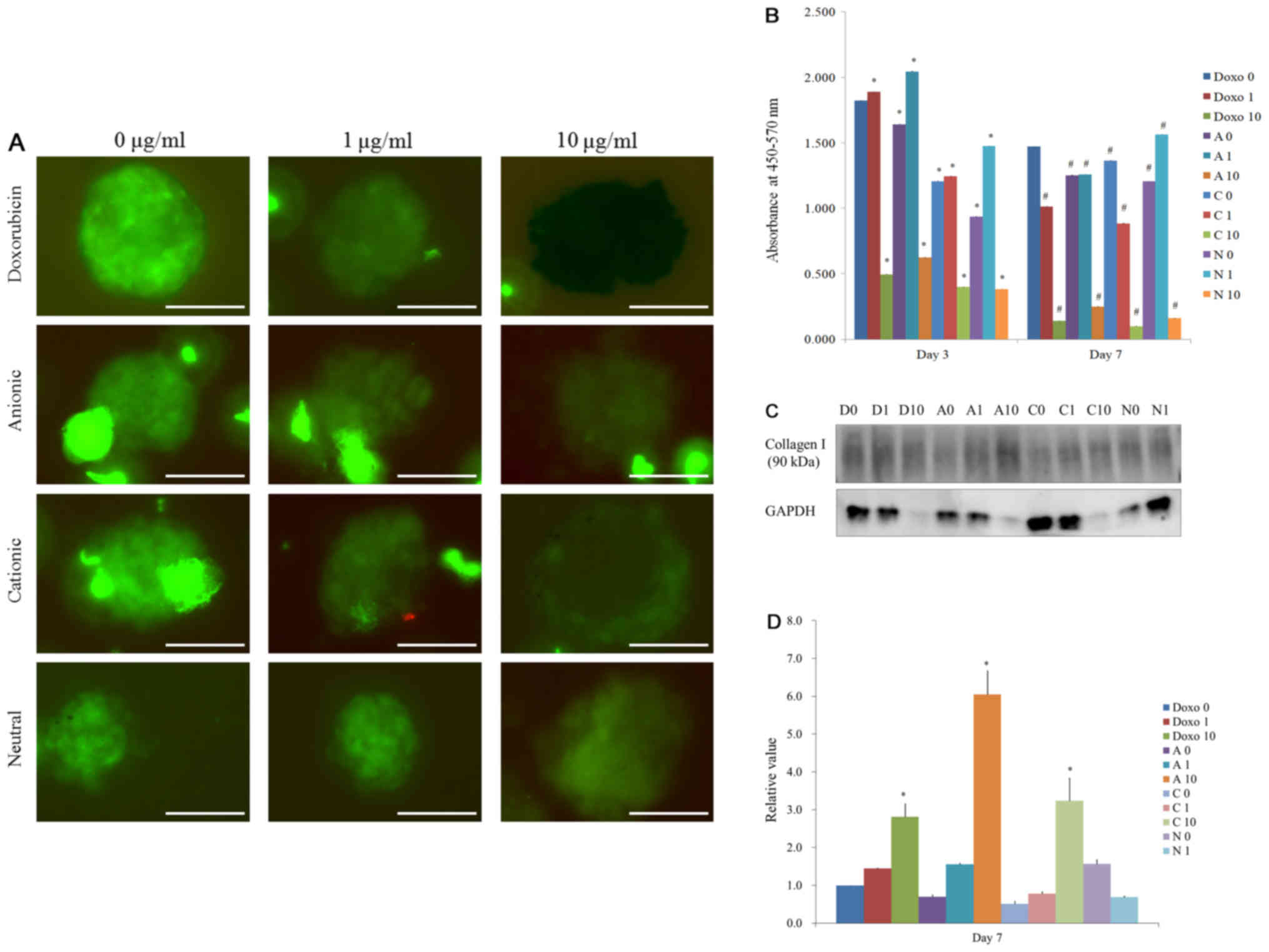|
1
|
Abraham SA, Waterhouse DN, Mayer LD,
Cullis PR, Madden TD and Bally MB: The liposomal formulation of
doxorubicin. Methods Enzymol. 391:71–97. 2005. View Article : Google Scholar : PubMed/NCBI
|
|
2
|
Soliman A N, Abd-Allah SH, Hussein S and
Eldeen Alaa M: Factors enhancing the migration and the homing of
mesenchymal stem cells in experimentally induced cardiotoxicity in
rats. IUBMB Life. 69:162–169. 2017. View
Article : Google Scholar : PubMed/NCBI
|
|
3
|
Csikos Z, Kerekes K, Fazekas E, Kun S and
Borbely J: Biopolymer based nanosystem for doxorubicin targeted
delivery. Am J Cancer Res. 7:715–726. 2017.PubMed/NCBI
|
|
4
|
Fite BZ, Kheirolomoom A, Foiret JL, Seo
JW, Mahakian LM, Ingham ES, Tam SM, Borowsky AD, Curry FE and
Ferrara KW: Dynamic contrast enhanced MRI detects changes in
vascular transport rate constants following treatment with
thermally-sensitive liposomal doxorubicin. J Control Release.
256:203–213. 2017. View Article : Google Scholar : PubMed/NCBI
|
|
5
|
Lee SI, Yeo SI, Kim BB, Ko Y and Park JB:
Formation of size-controllable spheroids using gingiva-derived stem
cells and concave microwells: Morphology and viability tests.
Biomed Rep. 4:97–101. 2016. View Article : Google Scholar : PubMed/NCBI
|
|
6
|
Wang WZ, Yao XD, Huang XJ, Li JQ and Xu H:
Effects of TGF-β1 and alginate on the differentiation of rabbit
bone marrow-derived mesenchymal stem cells into a chondrocyte cell
lineage. Exp Ther Med. 10:995–1002. 2015. View Article : Google Scholar : PubMed/NCBI
|
|
7
|
Li Y, Dal-Pra S, Mirotsou M, Jayawardena
TM, Hodgkinson CP, Bursac N and Dzau VJ: Tissue-engineered
3-dimensional (3D) microenvironment enhances the direct
reprogramming of fibroblasts into cardiomyocytes by microRNAs. Sci
Rep. 6:388152016. View Article : Google Scholar : PubMed/NCBI
|
|
8
|
Lo YP, Liu YS, Rimando MG, Ho JH, Lin KH
and Lee OK: Three-dimensional spherical spatial boundary conditions
differentially regulate osteogenic differentiation of mesenchymal
stromal cells. Sci Rep. 6:212532016. View Article : Google Scholar : PubMed/NCBI
|
|
9
|
Hsiao C, Tomai M, Glynn J and Palecek SP:
Effects of 3D microwell culture on initial fate specification in
human embryonic stem cells. AIChE J. 60:1225–1235. 2014. View Article : Google Scholar : PubMed/NCBI
|
|
10
|
Lee SI, Ko Y and Park JB: Evaluation of
the maintenance of stemness, viability and differentiation
potential of gingiva-derived stem-cell spheroids. Exp Ther Med.
13:1757–1764. 2017. View Article : Google Scholar : PubMed/NCBI
|
|
11
|
Bhinge KN, Gupta V, Hosain SB,
Satyanarayanajois SD, Meyer SA, Blaylock B, Zhang QJ and Liu YY:
The opposite effects of doxorubicin on bone marrow stem cells
versus breast cancer stem cells depend on glucosylceramide
synthase. Int J Biochem Cell Biol. 44:1770–1778. 2012. View Article : Google Scholar : PubMed/NCBI
|
|
12
|
Lowery A, Onishko H, Hallahan DE and Han
Z: Tumor-targeted delivery of liposome-encapsulated doxorubicin by
use of a peptide that selectively binds to irradiated tumors. J
Control Release. 150:117–124. 2011. View Article : Google Scholar : PubMed/NCBI
|
|
13
|
Shah S, Chandra A, Kaur A, Sabnis N, Lacko
A, Gryczynski Z, Fudala R and Gryczynski I: Fluorescence properties
of doxorubicin in PBS buffer and PVA films. J Photochem Photobiol
B. 170:65–69. 2017. View Article : Google Scholar : PubMed/NCBI
|
|
14
|
Yoo HS, Lee KH, Oh JE and Park TG: In
vitro and in vivo anti-tumor activities of nanoparticles based on
doxorubicin-PLGA conjugates. J Control Release. 68:419–431. 2000.
View Article : Google Scholar : PubMed/NCBI
|
|
15
|
Lee S, Lee SY, Park S, Ryu JH, Na JH, Koo
H, Lee KE, Jeon H, Kwon IC, Kim K and Jeong SY: In vivo NIRF
imaging of tumor targetability of nanosized liposomes in
tumor-bearing mice. Macromol Biosci. 12:849–856. 2012. View Article : Google Scholar : PubMed/NCBI
|
|
16
|
Rana T, Chakrabarti A, Freeman M and
Biswas S: Doxorubicin-mediated bone loss in breast cancer bone
metastases is driven by an interplay between oxidative stress and
induction of TGFβ. PLoS One. 8:e780432013. View Article : Google Scholar : PubMed/NCBI
|
|
17
|
Zhang S, Liu P, Chen L, Wang Y, Wang Z and
Zhang B: The effects of spheroid formation of adipose-derived stem
cells in a microgravity bioreactor on stemness properties and
therapeutic potential. Biomaterials. 41:15–25. 2015. View Article : Google Scholar : PubMed/NCBI
|
|
18
|
Tang Y, Xu Y, Xiao Z, Zhao Y, Li J, Han S,
Chen L, Dai B, Wang L, Chen B and Wang H: The combination of
three-dimensional and rotary cell culture system promotes the
proliferation and maintains the differentiation potential of rat
BMSCs. Sci Rep. 7:1922017. View Article : Google Scholar : PubMed/NCBI
|
|
19
|
Ylostalo JH, Bazhanov N, Mohammadipoor A
and Bartosh TJ: Production and administration of therapeutic
mesenchymal stem/stromal cell (MSC) spheroids primed in 3-D
cultures under Xeno-free conditions. J Vis Exp. Mar 18–2017.
View Article : Google Scholar : PubMed/NCBI
|
|
20
|
Mohr JC, de Pablo JJ and Palecek SP: 3-D
microwell culture of human embryonic stem cells. Biomaterials.
27:6032–6042. 2006. View Article : Google Scholar : PubMed/NCBI
|
|
21
|
Khademhosseini A, Ferreira L, Blumling J
III, Yeh J, Karp JM, Fukuda J and Langer R: Co-culture of human
embryonic stem cells with murine embryonic fibroblasts on
microwell-patterned substrates. Biomaterials. 27:5968–5977. 2006.
View Article : Google Scholar : PubMed/NCBI
|
|
22
|
Rogozhnikov D, O'Brien PJ, Elahipanah S
and Yousaf MN: Scaffold free bio-orthogonal assembly of
3-dimensional cardiac tissue via cell surface engineering. Sci Rep.
6:398062016. View Article : Google Scholar : PubMed/NCBI
|
|
23
|
Park JB, Zhang H, Lin CY, Chung CP, Byun
Y, Park YS and Yang VC: Simvastatin maintains osteoblastic
viability while promoting differentiation by partially regulating
the expressions of estrogen receptors α. J Surg Res. 174:278–283.
2012. View Article : Google Scholar : PubMed/NCBI
|
|
24
|
Park JB: Effects of 17-α ethynyl estradiol
on proliferation, differentiation & mineralization of
osteoprecursor cells. Indian J Med Res. 136:466–470.
2012.PubMed/NCBI
|
|
25
|
Park JB: Low dose of doxycyline promotes
early differentiation of preosteoblasts by partially regulating the
expression of estrogen receptors. J Surg Res. 178:737–742. 2012.
View Article : Google Scholar : PubMed/NCBI
|
|
26
|
Barker LP, George KM, Falkow S and Small
PL: Differential trafficking of live and dead Mycobacterium marinum
organisms in macrophages. Infect Immun. 65:1497–1504.
1997.PubMed/NCBI
|
|
27
|
Ha DH, Pathak S, Yong CS, Kim JO, Jeong JH
and Park JB: Potential differentiation ability of gingiva
originated human mesenchymal stem cell in the presence of
tacrolimus. Sci Rep. 6:349102016. View Article : Google Scholar : PubMed/NCBI
|
|
28
|
Almazin SM, Dziak R, Andreana S and
Ciancio SG: The effect of doxycycline hyclate, chlorhexidine
gluconate and minocycline hydrochloride on osteoblastic
proliferation and differentiation in vitro. J Periodontol.
80:999–1005. 2009. View Article : Google Scholar : PubMed/NCBI
|
|
29
|
Jue SS, Lee WY, Kwon YD, Kim YR, Pae A and
Lee B: The effects of enamel matrix derivative on the proliferation
and differentiation of human mesenchymal stem cells. Clin Oral
Implants Res. 21:741–746. 2010. View Article : Google Scholar : PubMed/NCBI
|



